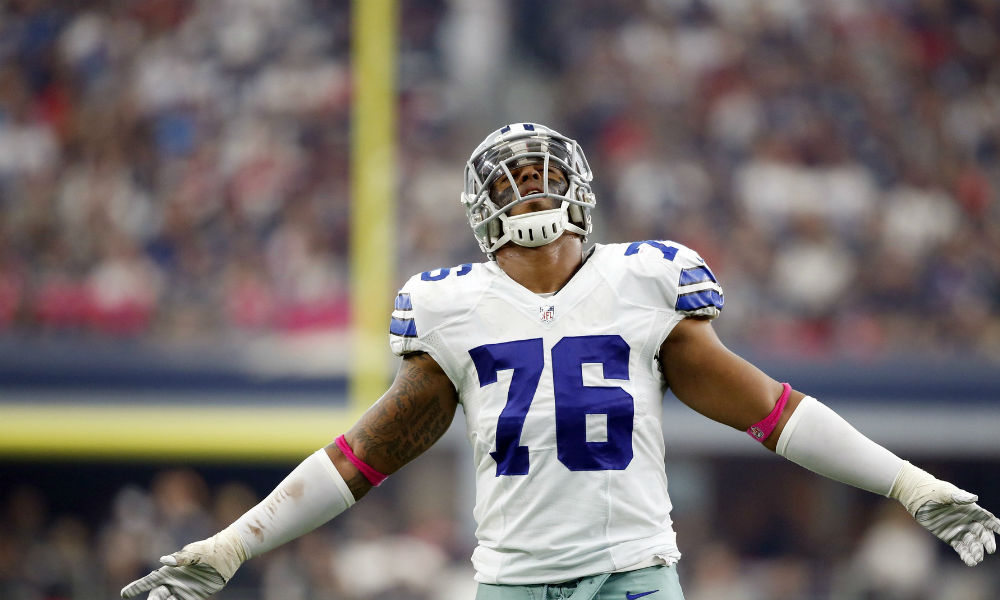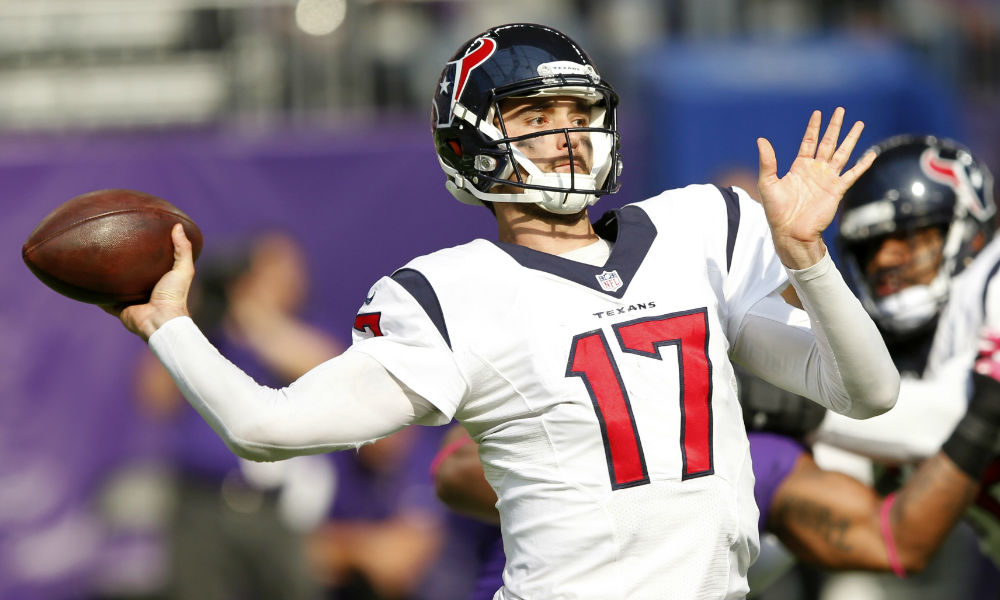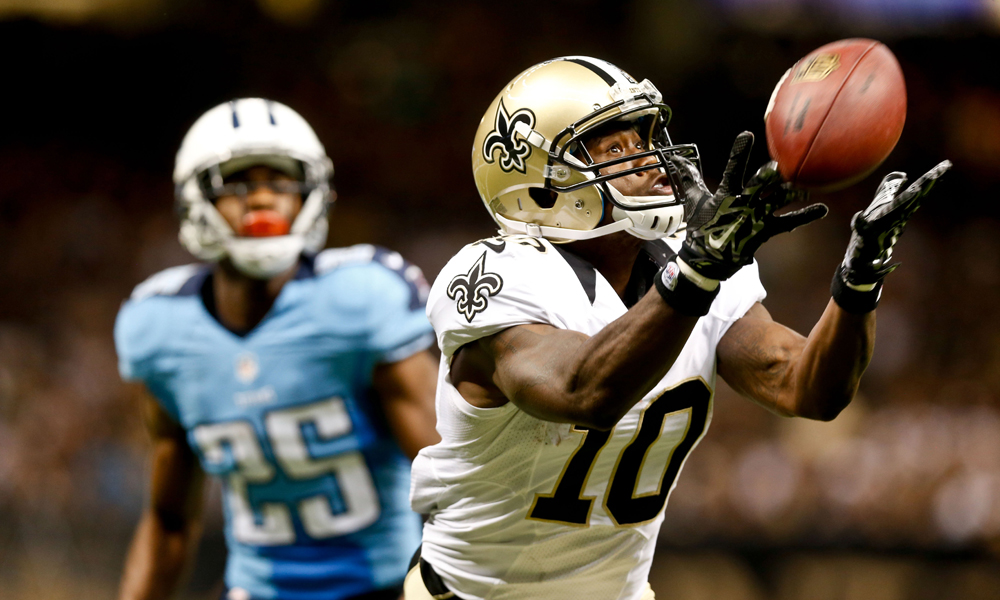News
Prepare for a Golden Age of NFL Wide Receivers
The NFL wide receiver position just keeps getting better and better.
The 2015 NFL draft wide receiver class might be the best we’ve seen.
That bold statement says a lot, but it says even more when one understands the context it’s in. We’re less than 12 months from one of the best receiver classes ever—again, possibly the best. 2014 brought the NFL receivers like Odell Beckham Jr. (New York Giants), Mike Evans (Tampa Bay Buccaneers), Brandin Cooks (New Orleans Saints), Sammy Watkins (Buffalo Bills) and Kelvin Benjamin (Carolina Panthers).
It wasn’t just a great class. It was a class that shifted the direction of the NFL in many ways.
In that context, we find a 2015 class that could be even better.
Recently, I’ve also written about how the NFL might be returning to more running game-centric schemes for many of the same reasons. These aren’t contradictory statements at all. Since the availability of pro-style quarterbacks in the pipeline is shrinking, NFL teams will be looking for more and more talent at the offensive skill positions. Meanwhile, the college game is only so happy to oblige.
The biggest reason for all of this boils down to the spread passing attack that has permeated the college game and has continued to do so in the NFL as well. Whereas, 10-15 years ago, these offenses were niche systems thought of as crutches by far too many, continued success and use at higher levels has led many of the spread concepts to be adopted on a wider basis.
In fact, it would be strange to find a playbook at any NFL facility that doesn’t borrow (sometimes liberally) from the scheme.
In even broader terms, it’s part of a trend away from strict polarizing NFL schemes. Once upon a time NFL lines were split down the middle by concepts like “zone blocking” vs. power blocking and now almost every team will run some combination of both. In passing terms, many offenses are diverse enough to find value in spread concepts, West Coast passing concepts, Air Coryell and the like.
In the QB column linked above, I noted that the NFL does not evolve as much as it revolves around some of the same wide pendulum swings of back-and-forth change. However, if I were to say one way the NFL is truly changing is that the advance of internet, communication and availability of scouting tape for college and pro teams alike has moved many of those polarizing concepts to the middle of the spectrum.
How does this all translate to wide receivers?
For wide receivers, the flexibility of schemes means they’re all a little more polished in terms of route running than they used to be—at least, in the kind of route running the NFL is now looking for. An era ago, receivers notoriously took an extra year or two longer than most prospects to really acclimate to the NFL playing field, but now both the training and the expectations have changed.
Receivers well-versed in a spread passing offense didn’t have a home in the last turn of the NFL’s wheel, but now almost every team has a spot for them. Using such a variance of schemes, as well, makes the elite polish of route running somewhat less important as it once was because every team has a bevy of screens, shadow routes and other “space” plays dedicated to letting receivers make a play with the ball in their hands.
Take this logic one step further.
As these changes have been happening incrementally in playbooks and in the minds of coaches across the country, they’ve also effected the reality not only in the field of play but also on the recruiting trail. Coaches who maybe only offered one or two top receivers per class once upon a time now need a handful of them to run three-to-four wide receiver sets.
Simple economics applies here as well since the demand of receiving talent effects the supply chain. Just about every football player plays two ways at some point in his life, and someone being scouted as a defensive back likely has some pretty solid tape on the offensive side of the ball as well. Receiver has always been a glamor position as well, so it’s easy to understand why young men might make that their first choice, and there are less and less coaches trying to get them to stick to defense.
With less glory at the running back position (thanks to running quarterbacks and back-by-committee set ups), there’s also plenty of shorter wide receivers who see a future as a slot receiver more appealing than as a backup running back.
With those two previous paragraphs in mind, it’s not difficult to imagine an alternate reality where Beckham Jr. played running back instead or Watkins played corner. Instead, we have a tremendous group of elite athletes of all shapes and sizes who have a future at the wide receiver position because the environment they’ve matured as football players in made the conditions absolutely perfect for it to be so.
In the upcoming draft class, there are plenty of parallels to the group of 2014.
The debate at the top is very similar with Amari Cooper (Alabama) playing the Watkins role as a polished, all-around great athlete with tremendous skills while Kevin White (West Virginia) is the size-speed freak that Evans was last year. Depth, too, is a strength of this receiving crop as prospects like Nelson Agholor (USC) and Rashad Greene (Florida State) could fall depending on team’s choicest step in and help their team almost immediately.
This all points to another year where rookie receivers exist as a major storyline and are depended upon (especially later in the season) by the teams that drafted them. That’s another 10-12 teams that could receiver a major franchise building block at the position just a year after that many teams did so in 2014. That’s a ridiculous streak that probably can’t continue to that degree, but will likely taper off in 2016 and beyond.
However, think down the road to when these receivers are all in their physical prime at 26 or 27.
We could be headed for some of the best years of across-the-board receiver play the NFL has ever seen, and it should be an awesome thing to watch.
News
Buccaneers admit mistake, boot Aguayo
Source: Mike Florio of ProFootballTalk
Powered by WPeMatico
News
Did Bucs put too much pressure on Aguayo?
Source: Mike Florio of ProFootballTalk
Powered by WPeMatico
News
Broncos holding their breath on Derek Wolfe
Source: Mike Florio of ProFootballTalk
Powered by WPeMatico




